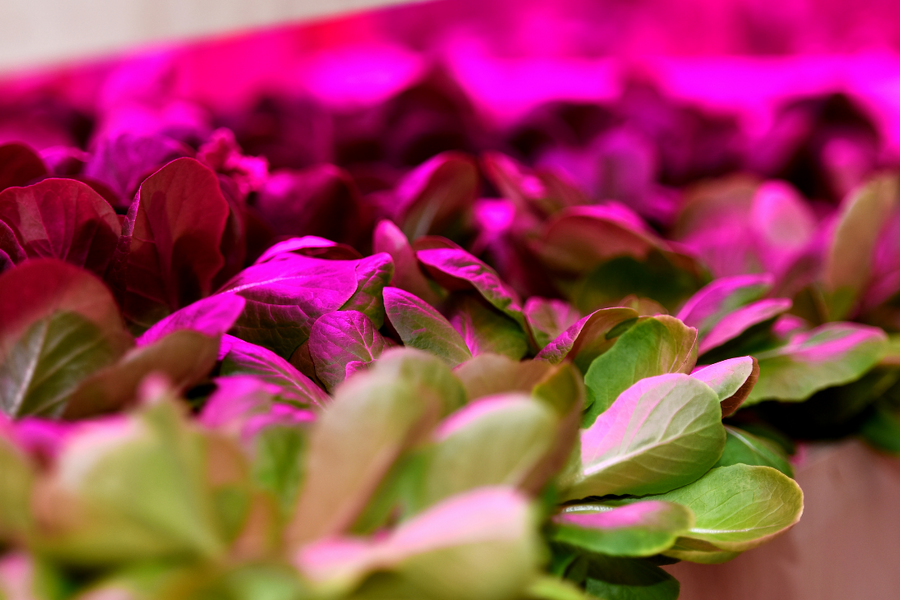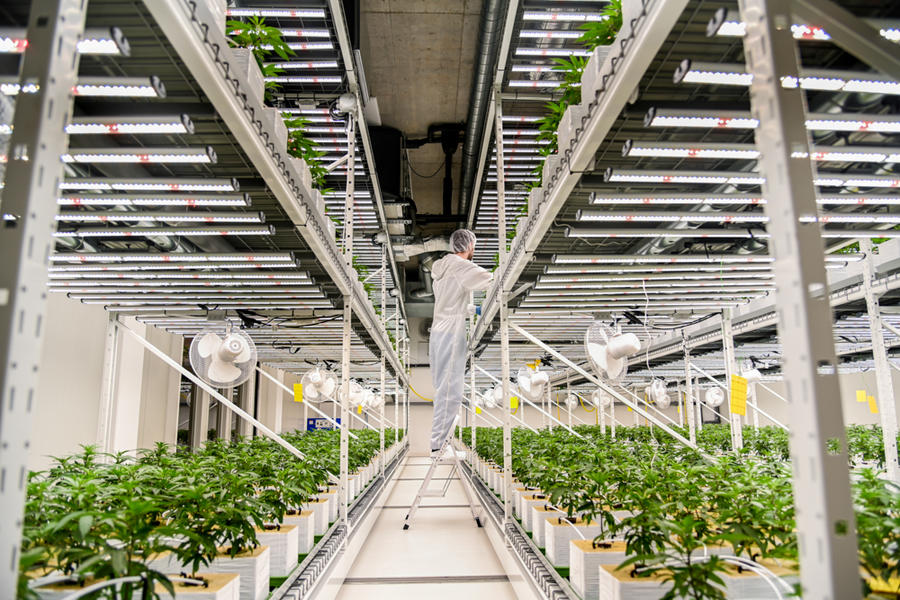KEY DIFFERENCES OF GROWING VEGETABLES VS. CANNABIS INDOORS
Insights on vertical farming
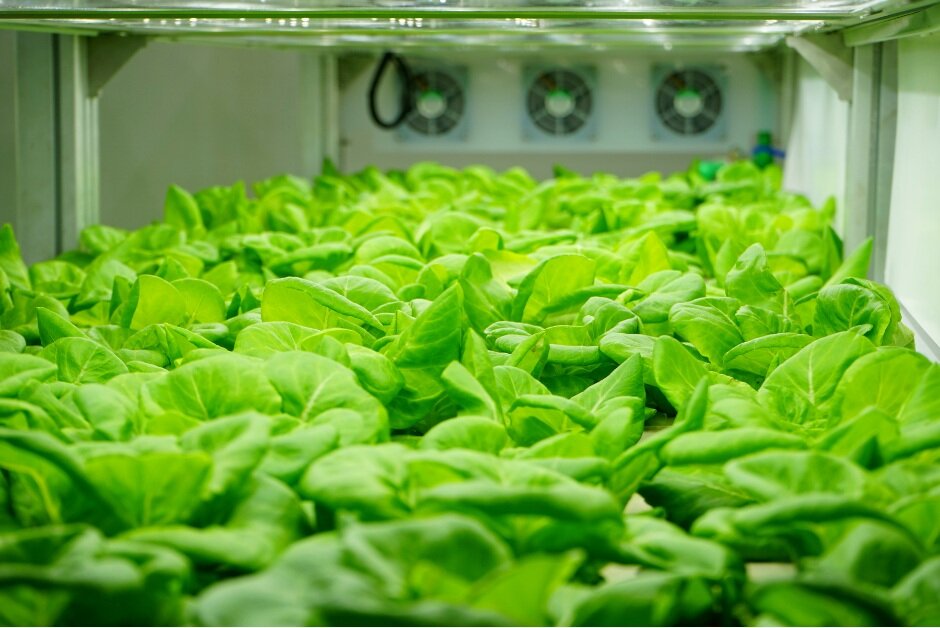
With legal cannabis becoming a growing part of the agriculture industry worldwide, it is not only sentiments toward cannabis that are changing.
Cannabis has a particular way of growing, so the industry and those looking to break in can’t treat it like they would a head of lettuce or a carrot. Here we examine a few of the key similarities and differences between growing cannabis and growing vegetables indoors.
Water use and delivery
All plants require water to live, but vegetables can vary greatly on the frequency and amount of water they require overall. These differences depend on the vegetable’s root profile, the medium it’s grown in, and whichever period is most crucial in its growth cycle. For example, Spinach needs constant access to water. Root vegetables do as well, but they require water most during the rooting or intubation stage.
For cannabis, the same is true, but commercial producers can see great success if they switch irrigation styles as the plants mature—from ebb and flow irrigation during the propagative and vegetative stages to drip irrigation during the flowering stage. Doing so will not only produce a better yield, but it will also reduce water waste.
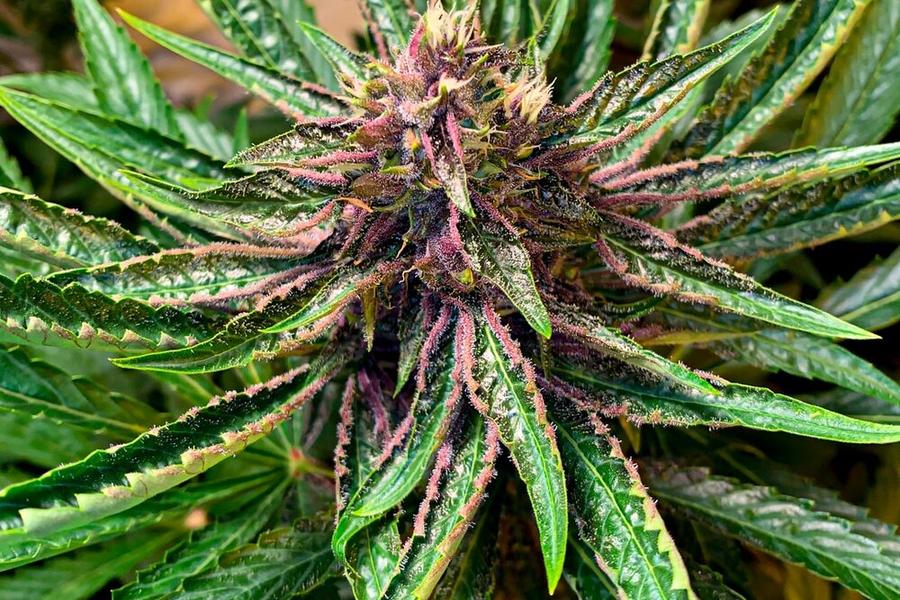
Environmental Differences
Supplementing carbon dioxide in indoor farming can increase crop yields and improve quality. Carbon dioxide is essential for plants during photosynthesis, where they convert CO² into energy. Higher levels of CO² can lead to increased crop yields. This is similar when growing both cannabis and vegetables. Growers can use low-tech and high-tech options to enrich CO² levels. Most plants respond well to CO² levels within the range of 500–1,500ppm. Anything below 200ppm, plant growth is inhibited. Anything above 2,000ppm is a waste of CO² as there are economic tradeoffs that need to be considered. CO² enrichment beyond 600-800ppm in vegetable farming is usually not worth the extra cost for the amount of yield increase.
Humidity control is another important factor that needs to be considered in indoor growing. The amount of moisture in the air affects the transpiration rate of plants, which refers to the amount of water lost by plants. Transpiration is responsible for moving water and nutrients from the root to other parts of the plant. However, when humidity levels are too high or too low, transpiration slows and curbs plant growth.
The ideal humidity for cannabis plants in seedling form is 75% and 55%-60% while in flowering and vegetative form. In horticulture, vapor pressure deficit (VPD) is used to describe the relationship between water in the air and water at the surface of a leaf. Typically, crops enjoy a VPD between 0.65 to 1.25 kPa. Leafy greens tend to do better on the lower end of this range, while fruiting and flowering plants, such as tomatoes and cannabis, tend to do better on the higher end of this range. The VPD range affects the plant’s stomata; anything outside of this ideal range will cause the stomata to close as a stress-induced response.
Temperature can be a limiting factor in indoor cannabis production. High temperatures cause plants to exert energy on cooling and low temperatures slow and stunt plant growth. Finding an optimal temperature will vary across different strains, but generally temperatures should be kept between 25-30? to maximize yields. A lower growing temperature (23?) is associated with higher THC contents in cannabis leaves from both tropical and temperate varieties than found in a higher growing temperature (32?).
When growing vegetables, temperature also varies based on crop type. Leafy greens, such as lettuce and spinach, thrive in colder environments. Fruiting and flowering crops, like tomatoes, prefer warmer growing environments.

Lighting
Regardless of what you grow outdoors, you cannot control when the sun sets. Indoor growers, however, can control exactly how much light their plants receive. But is there such a thing as too much sunlight?
On average, indoor vegetable growers strive for between fourteen and twenty hours of light daily, much more than what they would receive if they were outside. During the vegetative stage, indoor cannabis growers might expose their plants to between eighteen and twenty-four hours of light per day, then dial it back to around twelve hours daily during the flowering stage. A key challenge during the flowering stage is keeping the dark period dark enough. If too much light leaks into a flowering room during this dark period, the time it takes for flowering to begin increases and flowering may not happen altogether. For greenhouse growers of cannabis, this process may require a black box system to block out light from entering the greenhouse. It is important to consider these added requirements and costs when considering equipment options for greenhouse cannabis production.
The spectrum of light also can impact the crop. Red light is important during the flowering stage for cannabis, but this is less important when growing vegetables. Various cannabis strains perform better in different spectrums of light. When growing vegetables, a broad spectrum will allow you to grow a variety of crops. It is commonly debated whether growers should optimize light for the strain they are growing or use a full spectrum light. What it comes down to depends on what each grow facility needs. If a facility is growing a particular strain in high volumes, it would make sense to use a more targeted lighting spectrum.
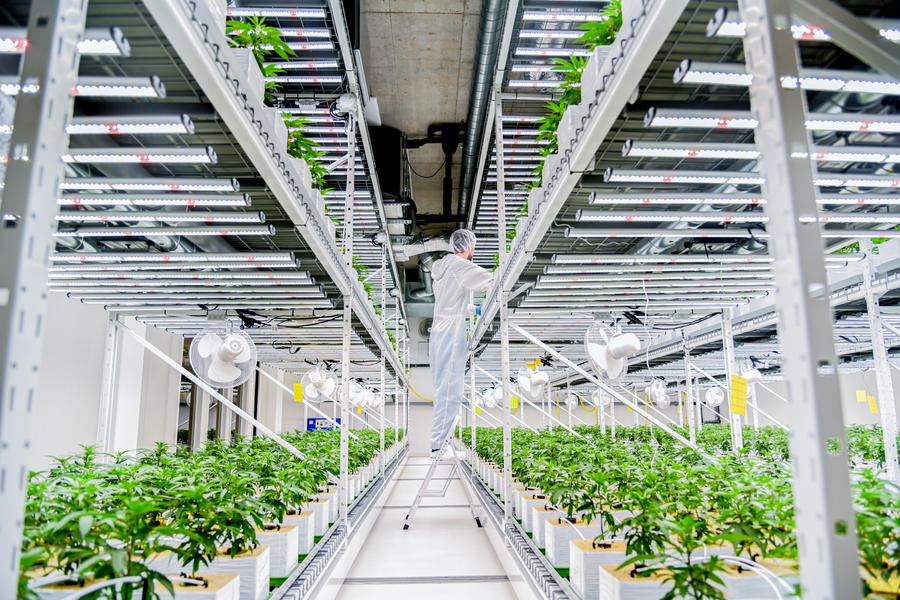
Seeding vs. Cloning
There are two ways that you can reproduce cannabis. You can grow from seed or by cloning. A clone is a plant cutting that is a genetic duplicate of the original plant, otherwise known as the mother. By cloning a mother plant, you can create a new harvest faster than growing from seed, germinating, and sexing. This significantly cuts down the grow time. Cloning allows you to save money by avoiding purchasing seeds. The clone will be an exact replica of the mother, so it makes sense to clone your highest quality plants.
With vegetables, cloning is not always the best option or even possible. Depending on the crop type you can determine if it is easy to clone or not. Some herbs can be easier to clone, like basil or rosemary, whereas leafy greens and some fruiting crops do not clone well or have the physiological structure to be cloned at all
The historically illicit status of cannabis has restricted the amount of studies and research conducted. There is more knowledge of vegetable production, but with cannabis production growers rely a lot on trial and error. Therefore, there is a lack of readily accessible information around cannabis cultivation. This lack of research and knowledge makes cannabis farming more of a risk.
Whether you’re growing cannabis or herbs or mushrooms, Montel has the right high-density vertical mobile grow rack system for you. Montel consults with the best growers in the business to engineer racking that serves exactly how you want to grow. Learn more about how Montel designs and installs its vertical farming systems.
Further Reading
THE FUTURE OF FARMING IS VERTICAL
MONTEL'S MOBILE GROW SYSTEMS OPTIMIZE SPACE VERTICALLY AND HORIZONTALLY
